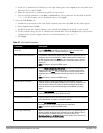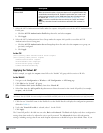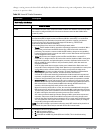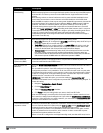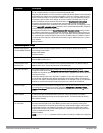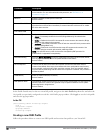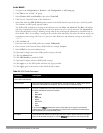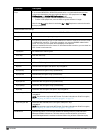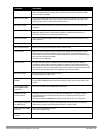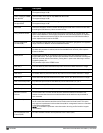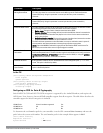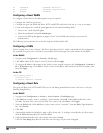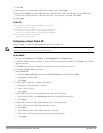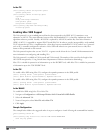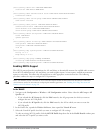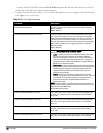
Parameter Description
power management features to sleep, the client must revive at least once during the DTIM
period to receive broadcasts
802.11g Transmit Rates Select the set of 802.11b/g rates at which the AP is allowed to send data. The actual transmit
rate depends on what the client is able to handle, based on information sent at the time of
association and on the current error/loss rate of the client.
802.11g Basic Rates Select the set of supported 802.11b/g rates that are advertised in beacon frames and probe
responses.
802.11a Transmit Rates Select the set of 802.11a rates at which the AP is allowed to send data. The actual transmit rate
depends on what the client is able to handle, based on information sent at the time of
association and on the current error/loss rate of the client.
802.11a Basic Rates Select the set of supported 802.11a rates, in Mbps, that are advertised in beacon frames and
probe responses.
Station Ageout Time Time, in seconds, that a client is allowed to remain idle before being aged out.
Max Transmit Attempts Maximum number of retries allowed for the AP to send a frame.
RTS Threshold Wireless clients transmitting frames larger than this threshold must issue Request to Send
(RTS) and wait for the AP to respond with Clear to Send (CTS). This helps prevent mid-air
collisions for wireless clients that are not within wireless peer range and cannot detect when
other wireless clients are transmitting.
The default value is 2333 bytes.
Short Preamble Click this checkbox to enable or disable a short preamble for 802.11b/g radios. Network
performance may be higher when short preamble is enabled. In mixed radio environments,
some 802.11b wireless client stations may experience difficulty associating with the AP using
short preamble. To use only long preamble, disable short preamble. Legacy client devices that
use only long preamble generally can be updated to support short preamble.
Max Associations Maximum number of wireless clients for the AP.
The supported range is 0-256 clients.
Wireless Multimedia
(WMM)
Enables or disables WMM, also known as IEEE 802.11e Enhanced Distribution Coordination
Function (EDCF). WMM provides prioritization of specific traffic relative to other traffic in the
network.
Wireless Multimedia U-
APSD (WMM-UAPSD)
Powersave
Enable Wireless Multimedia (WMM) UAPSD powersave.
WMM TSPEC Min
Inactivity Interval
Specify the minimum inactivity time-out threshold of WMM traffic. This setting is useful in
environments where low inactivity interval time-outs are advertised, which may cause
unwanted timeouts.
The supported range is 0-3,600,000 milliseconds, and the default value is 0 milliseconds.
Override DSCP mappings
for WMM clients
Override the default DSCP mappings in the SSID profile with the ToS value. This setting is
useful when you want to set a non-default ToS value for a specific traffic.
DSCP mapping for WMM
voice AC
DSCP used to map WMM voice traffic.
The supported range is 0-63.
DSCP mapping for WMM
video AC
Select the DSCP used to map WMM video traffic.
DellPowerConnectW-SeriesArubaOS6.2 | User Guide VirtualAPs | 327



